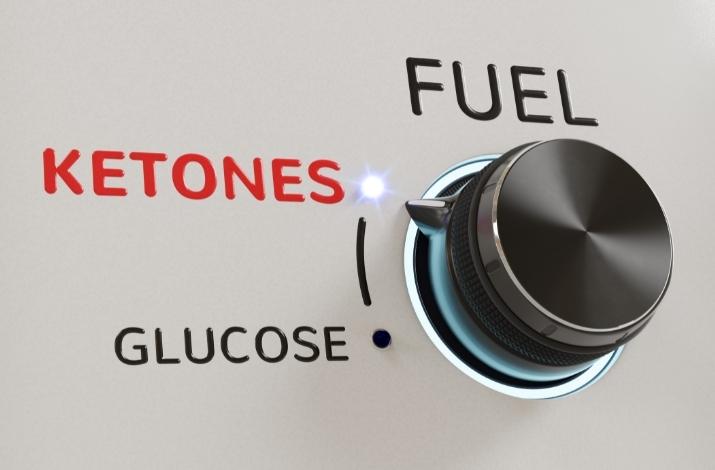What are ketones and why do they matter?

The body has two primary metabolic fuels–fat and glucose. Which fuel you use is affected by a few variables, but the strongest variable is the hormone insulin. When insulin is elevated, glucose is the primary fuel. When insulin is reduced, fat is the primary fuel.
Understanding metabolic fuel use is essential to understanding ketones. Ketones are only produced when the body is in a prolonged state of fat burning. This is because ketones are actually just pieces of “burned” fat. Normally, when fat is burned, it is broken up all the way in CO2(carbon dioxide). Of course, this CO2 is simply exhaled. But CO2 is only produced when fat is burned all the way and fully used to create energy for the cell.
When insulin is low for an extended period of time, up to about 20 hours or so, the cells of the body, especially the liver cells in this case, can’t stop burning fat. Essentially, the cells are burning more fat than they need! Normally, a cell is only burning enough fuel to meet its needs–it’s frugal with the fuel. However, when insulin is low for a long period, the cell simply can’t stop burning fat, even after it’s met its energy needs. This is where ketones come in.
Ketones are produced from a fat-burning cell when the cell has both met all its metabolic needs and also can’t stop burning fat. But why produce ketones from this excess? One reason is that ketones are great fuel for cells that don’t burn fat, most especially neurons and other cells in the brain. By far, the brain is the largest consumer of ketones and begins greedily gobbling them up the moment they appear in the blood.
Also, ketones are a great way to remove excess energy. Remember, ketones are produced when a cell is burning excess fat, so it’s little surprise that ketones help with removing some of this excess. An oft-overlooked aspect of ketones is that they are caloric molecules. We always talk about the calories of fat or glucose, but ketones also have a caloric value that is very close to the caloric value of glucose. When ketones start to rise in the blood, as noted, they can be used for energy, but what isn’t used for energy is simply removed from the body.
First, the excess ketones (i.e., excess energy) is exhaled, just like the CO2 is. This is why people will note the unique smell on the breath of people who have been fasting or strictly adhering to a ketogenic diet. That smell is actually the ketones being blown out of the body.
Second, ketones are removed through the kidneys into the urine. This is why ketone urine strips are so often used to determine the amount of ketones in the body. But again–this is simply another avenue for removing ketones (i.e. excess energy) from the body.
In the end, an accurate view of ketones is that they’re a strong signal of fat burning–if you have ketones in your blood (or breath or urine!), you know you’re in fat-burning mode. Whether you get there through fasting or a low-carbohydrate diet, once insulin is low, fat burning starts and ketones are right around the corner.
This article is for informational and educational purposes only. It is not, nor is it intended to be substitute for professional medical advice, diagnosis, or treatment and should never be relied upon for specific medical advice.



















